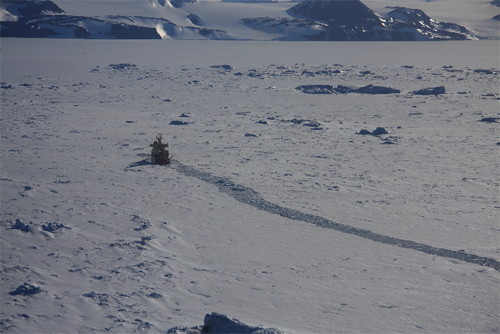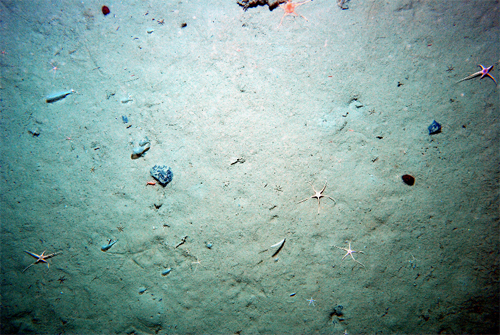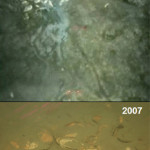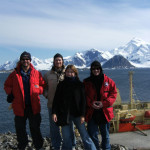 David Honig is a graduate student in marine science at Duke University in the lab of Dr. Cindy Van Dover. He is participating in LARISSA, a 2 month multinational expedition to study the causes and consequences of the ice shelf collapse. He will be posting regular updates on the expedition exclusively for Deep Sea News readers!
David Honig is a graduate student in marine science at Duke University in the lab of Dr. Cindy Van Dover. He is participating in LARISSA, a 2 month multinational expedition to study the causes and consequences of the ice shelf collapse. He will be posting regular updates on the expedition exclusively for Deep Sea News readers!
——————————
10 January 2010
Fast ice, slow progress
As the Palmer continues south we are encountering ever thickening “fast ice”—floating ice chunks that have frozen together to form a solid sheet inches to feet thick on the sea surface. Although the Palmer is technically an ice breaker, there is a limit to what it may safely navigate. It appears we may be unable to reach our sampling stations in the Larsen B embayment.

At midday the ship stopped to deploy helicopters to survey ice conditions to the south and allow our cryosphere team to complete fieldwork on surrounding glaciers. This pause in our journey south also gave our marine ecosystems group a chance to recover sea ice cores. Fast ice is thin enough to be translucent and the algae that grow on the underside of fast ice are an important form of primary production in the Antarctic.
In the evening, the first test of our “pogo cam” was conducted. This is a high-definition camera that we can lower over the side of the ship to obtain a stream of bottom images.
Meanwhile, collection and sorting of whalebone epifauna continues unabated . . .






